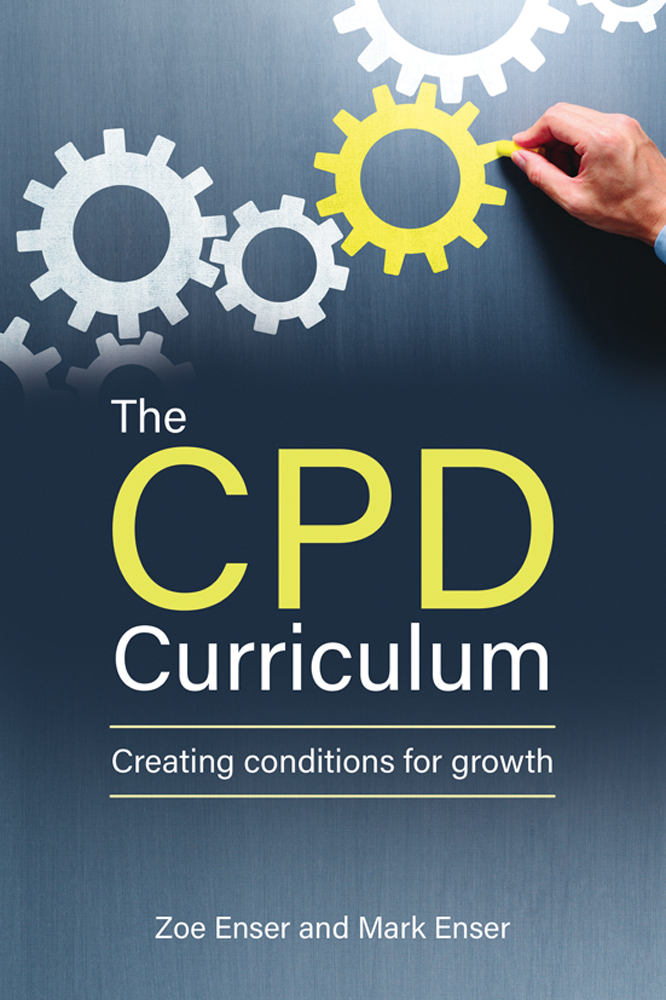Our new book, The CPD Curriculum, explores a knotty problem in education. Why, despite countless hours of what is called CPD, do teachers not continue to improve in many schools? The research that we explore in our book points to the same conclusion – that teachers make rapid progress in the first few years of teaching but then, regardless of continuing professional development, they plateau. We also know that very little of what is said or done during a CPD session makes it back into the classroom. It just isn’t transforming practice. We try to get the bottom of why not.
Part of the problem is that views on teacher development tend to fall into two camps. Korthagen (2017) terms them Professional Development 1.0 and Professional Development 2.0. In the first teachers are corralled into the hall and someone talks at them for an hour, directing them in exactly what they are meant to do and then they are left to go off and it is hoped they will do it. In the second teachers are simply left to get on with it. There is a belief that people will discover what to do for themselves and learn through experience. Perhaps in Korthagen’s model we can see a mirroring of the debates between traditional (Future 1) and Progressive (Future 2) views on how learning takes place. The problem is, teachers, once they stop being novices, learn very little simply from being told what to do and are resistant to change. At the same time, we aren’t great at learning from experience either. It is entirely possible to be a teacher of 18 years who has not 18 years experience but the experience of teaching the same year 18 times. As with Michael Young and a Future 3 model of curriculum that moves us beyond Future 1 and Future 2, Korthagen suggests a model for Professional Development 3.0 in which the teacher is given central place and professional and personal aspects of learning are considered.
What we need, and what we try to offer in the book, is a new way of looking at CPD that is truly Continuing, Professional and Developmental. We suggest that abstract theory (from Professional Development 1.0) can be very important, but only if followed by time for active experimentation in which teachers plan to apply what they have heard in their own context. Likewise, we look at how we can learn from experience, but only if offered time for reflection so that you can consider what that experience was showing us. Through doing this we are viewing CPD through the lens of Kolb’s Experiential Learning Cycle (1984), a model for learning based on vocational practice.

One of the key lessons I learnt in researching The CPD Curriculum was just how little of what we know about how people learn we apply to teacher learning, including what we know about curriculum thinking. How much CPD has no sequencing or sense of building over time? Instead what we are offered is a series of one off events with little to tie them together. The pedagogy, or andragogy if you prefer, is also missing. We know we learn from thinking hard and applying what we have read, seen or been told in different contexts and yet too often CPD gives no time for this at all; and it is time for a change. All of this needs a curriculum approach. There needs to be a clear intent of what we are trying to achieve and a plan for implementation and way of seeing if it is having an impact. This forms the core of our book.
We need a revolution in CPD, a fresh approach. What we are doing at the moment just isn’t working so lets stop doing it and instead learn from the curriculum and learning we provide for our pupils. There is a wealth of research into this topic that can be explored and clear actions we can take. We just need to take a step back and be willing to take an honest look at where we are now and dare to dream bigger.
Kolb, David (1983) Experiential Learning: Experience as the Source of Learning and Development (Upper Saddle River, NJ: Prentice Hall).
Korthagen, Fred (2017) Inconvenient truths about teacher learning: towards professional development 3.0, Teachers and Teaching: Theory and Practice 23(4): 387–405.
The CPD Curriculum: Creating Conditions for Growth is out now – order here and join the revolution.










